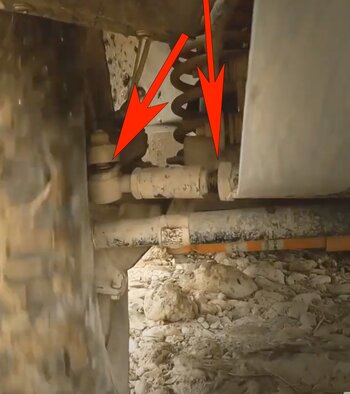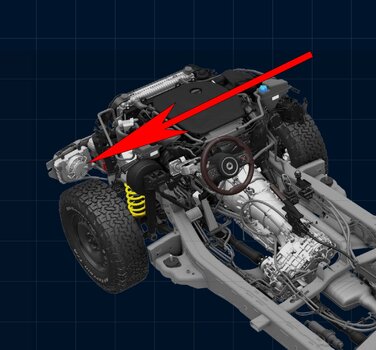[QUOTE username=Che userid=8996982 postid=1332906584]@Ferrugenfish
Whilst Stefan does have plenty of experience and makes some valid points I think there are a few things which are a bit of a stretch in his video.#1 - Servicing locations being mainly where population centres are. This is the case with all manufacturers to some extent. When youâre in the outback you just use local mechanics. To illustrate the point, to my knowledge there isnât a single dealership service centre for any particular make in Coober Pedy - there are however at least three local workshops that will work on any car you bring in. Stefan cites a single example of a mechanic turning him away, I somehow doubt that this one mechanic is illustrative of every mechanic in outback Australia. To further illustrate the point, NSW State Police highway patrol use the BMW 530D. This has the same B57 engine used in the Grenadier. You can see these vehicles as far out as Broken Hill which for those that dont know is a mining town 1,100km inland from Sydney. Those are being serviced somewhere and I doubt its the BMW service in Adelaide, 500km away.#2 - Whilst the footrest, fuel capacity, etc. are fair criticisms, he doesnât keep a fair and balanced perspective on the fact he is looking at a prototype that is being used to test the vehicle and find flaws in its design that can be fixed in production vehicles. This happens behind the scenes for other vehicles but Ineos have been very open with their programme. Unfortunately some cannot entertain this concept and treat the prototype as if it is sitting on the dealership floor, ready to be sold.#3 - He seems to compare the vehicle to his modified examples. Of course once upon a time those vehicles were new and unmodified and it is that âbaselineâ vehicle we should be comparing it to. Any global vehicle is a compromise and I think the Grenadier is a very fair compromise that will provide a good base vehicle for customers to modify to their purposes.[/QUOTE]
I hear that Che. The servicing topic definitely seems to be a "we'll see" one. Seems natural that a small vehicle company would have fewer servicers at first, then more as it becomes popular. The engine and tranny come in many other vehicles so I can't imagine it taking an unnatural amount of time for "Joe's Garage" to eventually figure out. Suspension is all brand new, but good mechanics should be able to look at the schematics and figure it out over time. We'll see.
Yea I would hope that Ineos would get rid of that tiny foot area for the driver in right-side driving vehicles. I'd hate that. Fortunately for me if I bought one it would be on the left. We'd also get a 100 liter tank for some reason. Hopefully the final version doesn't have that ramp crowding right side driver's feet. But as for his thoughts on it, he's going off of what he sees. This is part of feedback to the developers, which is important, and as you say, Ineos is trying to listen to people.
I think I disagree with you slightly on your third point. The Grenadier is touted to be a very offroad worthy vehicle, but the control arms are really too short to boast as such. Just because many people don't want/need 35" tires doesn't mean that many people won't want/need them for their offroad circumstances. If it was touting to be "good enough" offroad, they'd be spot on with those control arms and their inability to take what is now considered "the new 33" tire" (the 35"). 35's are no longer considered to be huge, and many vehicles are offering them straight out of the factory. So for the Grenadier to require replacing control arms and replace parts to change the final drive ratio to drive properly just to get 35's on there... well to many of us, that's not a "purpose built" off-roader, even if we fully understand that it's not purposed specifically as a rock crawler. Rock crawlers typically start at 35" and go up... 37.... 40... 42 etc. That is splitting hairs a bit, but that's the side of that fence that I'm on. Maybe that's because I'm in the U.S. where mountains are tall and rocks are big. Most of Europe and Australia have very small mountains and crawling isn't nearly a big of a thing as it is here. Even though you might be able to fit 35's under the rig with a lift, it does throw off the geometry of the short control arms enough to degrade ride experience, handling, and wheel travel at least in one direction. Same with final gear ratio. We drive over 11,000 feet in elevation here in the U.S., so while towing there is a very significant power loss to overcome and work the engine trying to find enough torque to push through. Same with very steep inclines while rolling the bigger wheels we like... needs an optional final drive ratio like many other manufacturers offer in their trucks, depending on how the customer intends to use the work vehicle. So the content creator here isn't saying, "The Ineos isn't as good as my altered rigs". He's saying "The Ineos is supposed to be an off roader but requires too many very expensive changes to serve many off roader's environments". I paraphrased of course... but I did comment on his Youtube video and he wrote back saying he agrees. Making the suspension changes he's talking about wouldn't just make it more offroad worthy for rock crawlers; it would increase the control and drive experience of those who use it as a daily driver on the pavement, too.
All in all, this is a first iteration and they've done a great job in so many ways. It's just many could-be customer's wishes to make such changes. I've seen enough comments on various platforms to know I speak for many at least on the topic of suspension and tire size despite the fact that many will be perfectly happy as it is.... or at least we hope, when we get to drive on... after paying for it.









